Hello and welcome:
I want to begin this week addressing the tragic events in South Carolina.
We join all people of faith and good will in prayerful solidarity with the Emanuel AME Church congregation and community of Charleston during this time of loss and heartache. It is foundational to our country’s heritage that places of worship always be sanctuaries of prayer, safety and peace. We must reject these senseless acts of hatred and brutality in society. Commending the victims of this attack to God’s loving mercy, we pray for healing through the words of the Prayer of Saint Francis:
Lord, make me an instrument of Your peace. Where there is hatred, let me sow love; where there is injury, pardon; where there is doubt, faith; where there is despair, hope; where there is darkness, light; where there is sadness, joy. O, Divine Master, grant that I may not so much seek to be consoled as to console; to be understood as to understand; to be loved as to love; For it is in giving that we receive; it is in pardoning that we are pardoned; it is in dying that we are born again to eternal life.
– – –
Now, on the events of my week…
Last Saturday I traveled to Brockton where the tri-parish community was celebrating the 100th anniversary of St. Edward’s Church of St. Edith Stein Parish. 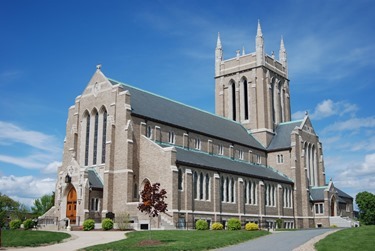
Many of the priests who formerly worked there came back for the celebration. Following the celebration in the church, they had an outdoor celebration with a very large cake.

They showed me the bench that was the memorial for Father Brian Smith, who had been the associate there at the time of his death at a very young age.
This week it was brought home to me how many young priests we have had in recent years who, after very short tenure, passed away.
In particular this week, we remembered Father Dan Kennedy who was honored in Needham by having a bridge named after him. 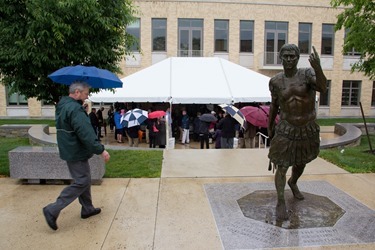
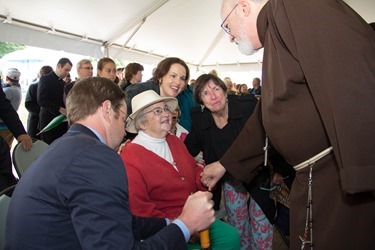
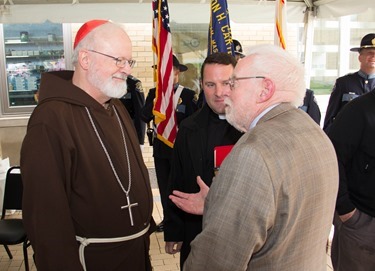
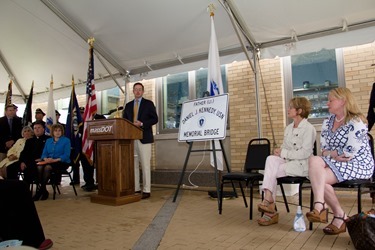
There was a ceremony at St. Bartholomew’s, followed by a blessing of the bridge and unveiling of a memorial plaque on the bridge. The ceremony and dedication was very well attended by family, friends and many from the community, despite the driving rain.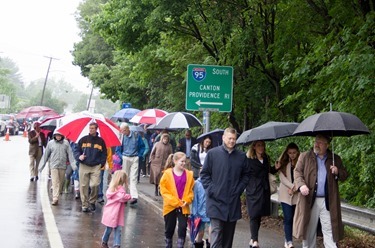
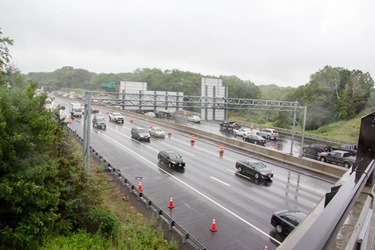
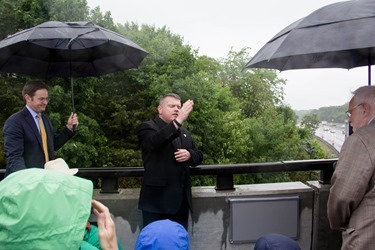
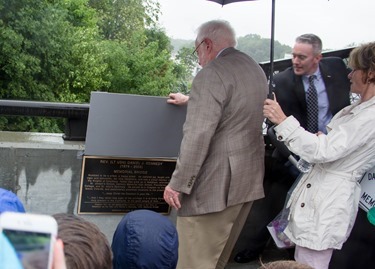
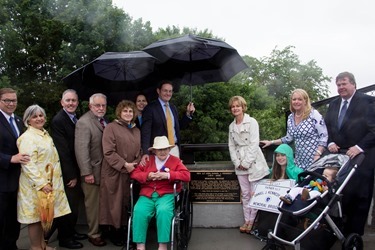
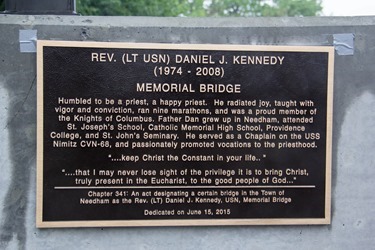
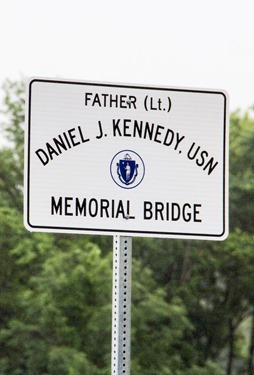
– – –
Sunday was a very full day, with many important celebrations. We began in the morning with the Gold and Silver Wedding Jubilee Mass at the Cathedral. It was a very beautiful celebration, during which about 250 couples renewed their vows.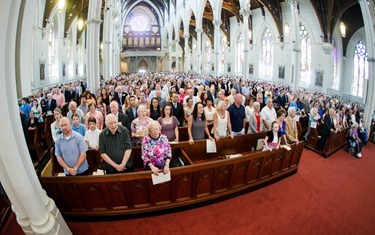
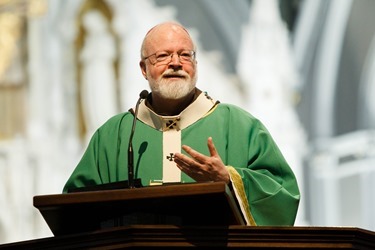
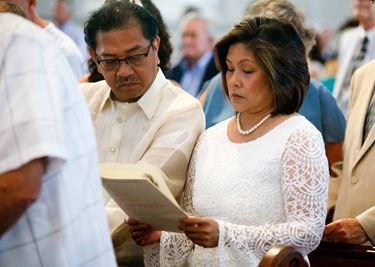
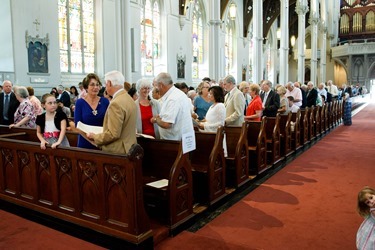
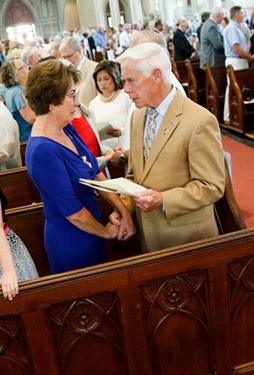
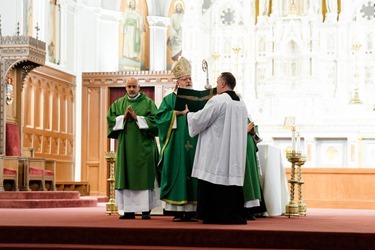
The cathedral was nearly full with family and friends who were there to witness the occasion. I always find this celebration a wonderful witness of the importance of married life in today’s world.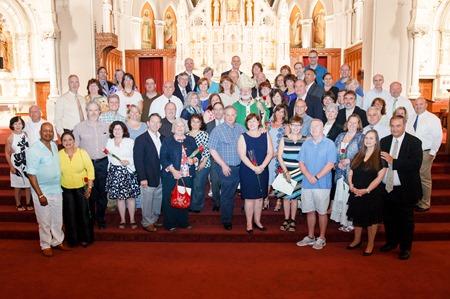
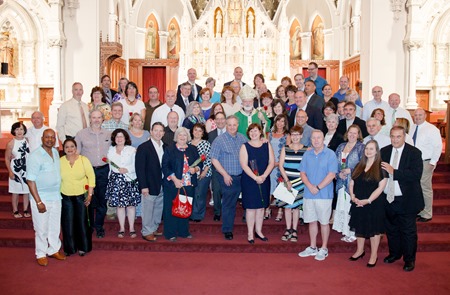
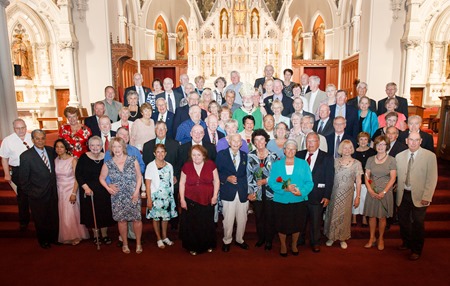
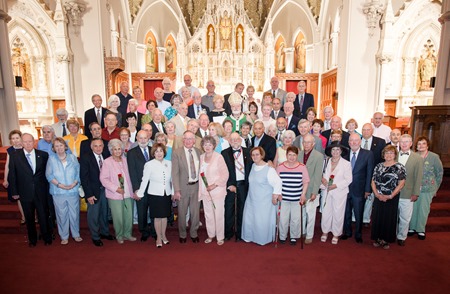
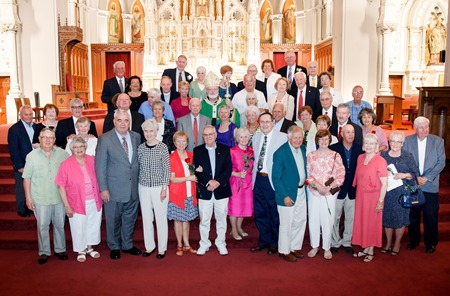
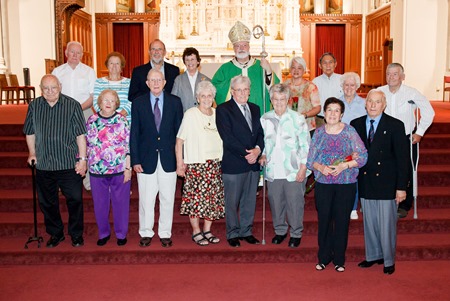
– – –
Then, in the afternoon I went to St. Theresa’s in West Roxbury to celebrate the Mass for the 100th anniversary of the Daughters of St. Paul. We were happy that many of the members of the Pauline family were there including several Pauline priests and the Sister Disciples of the Divine Master. We were also joined by many priests of the archdiocese, as well.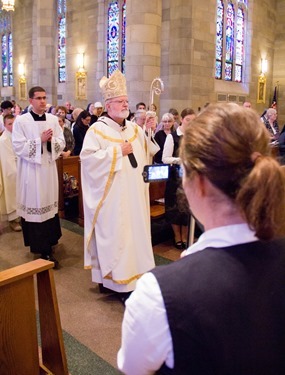
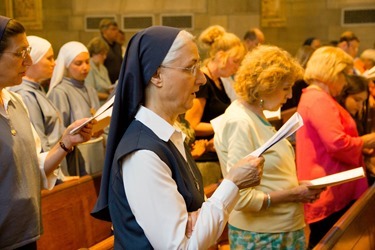
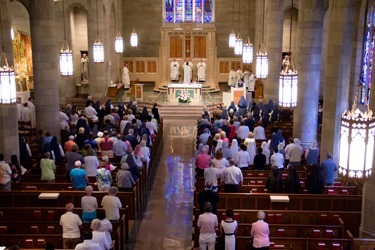
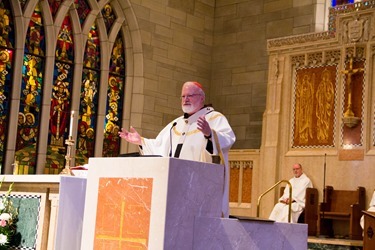
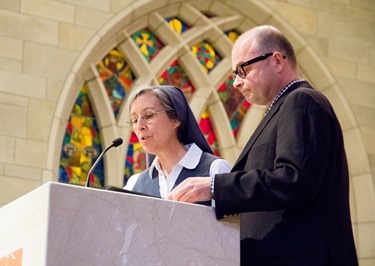
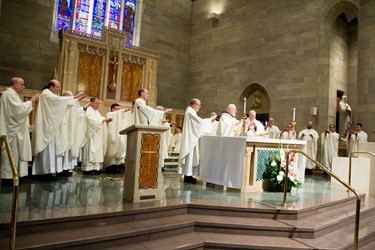
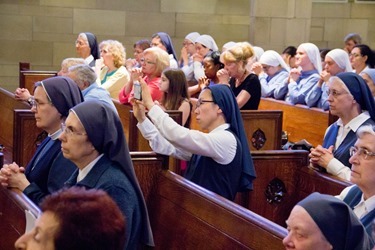
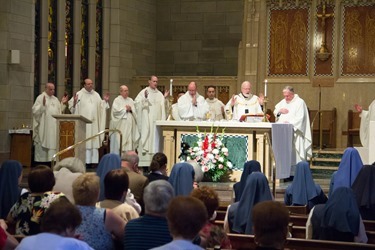
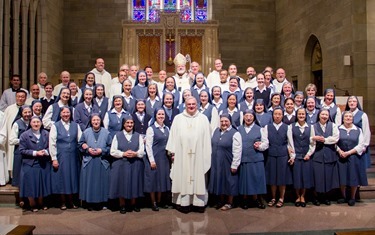
Following the Mass, there was a reception in the parish hall that Monsignor Helmick graciously hosted for us.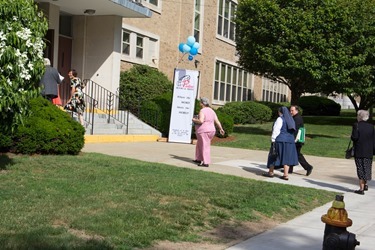
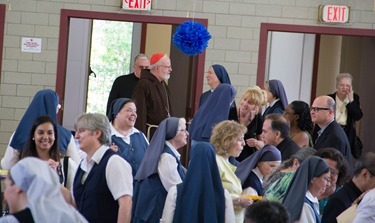
– – –
In the evening was the annual gala to benefit the Redemptoris Mater Seminary of the Archdiocese of Boston. 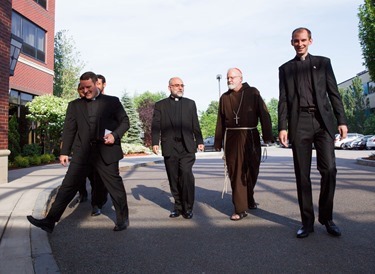
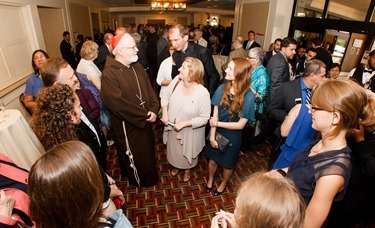
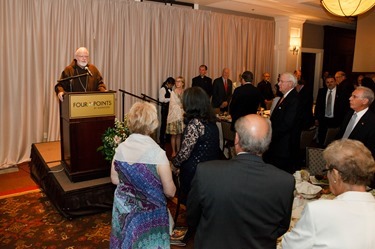
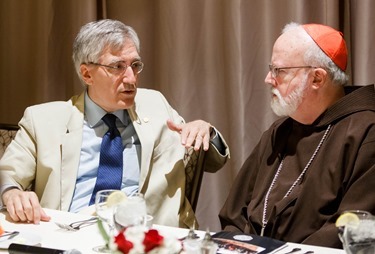
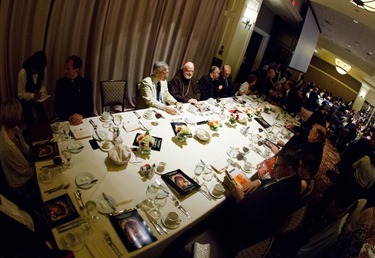 During the evening, the rector, Father Tony Medeiros announced the seminary’s plan to expand its current facilities in Brookline.
During the evening, the rector, Father Tony Medeiros announced the seminary’s plan to expand its current facilities in Brookline.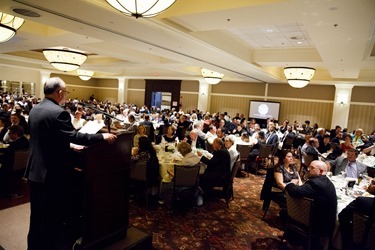
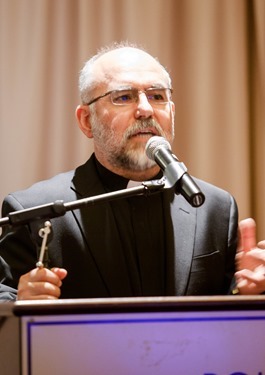
They also showed a video highlighting the ministry of Pope Paul VI.
The keynote speaker of the evening was Professor Robert George, a very famous Catholic intellectual from Princeton University. He gave a very excellent presentation.
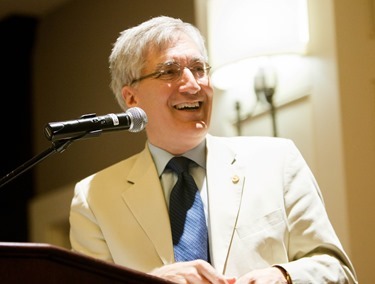
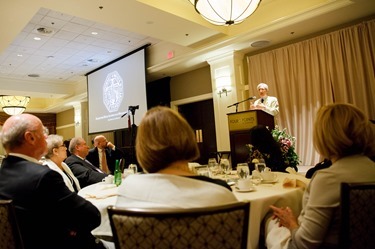
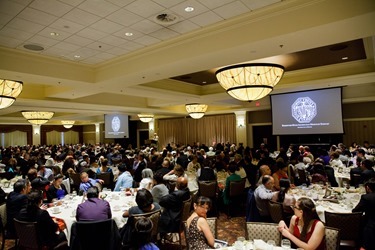
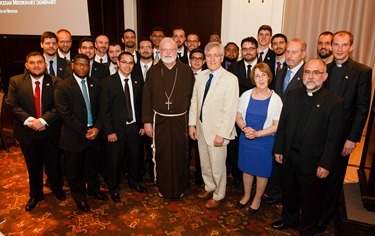
– – –
Monday I met with Jim Towey, the president of Ave Maria University. He was very happy to share with me that their enrollment has almost doubled and that he has established an institute there for Mother Teresa. 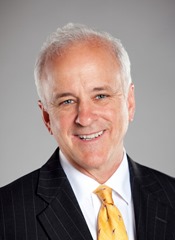
One of the things that they have been doing has been sending their students around the country — and around the world — to work in projects that were initiated by Mother Teresa. They are trying to very strongly incorporate service of the poor as part of their formation of these young Catholics.
– – –
That afternoon was the St. John’s Seminary board meeting.
We are very grateful for all the hard work of the board members in support of the seminary’s formation programs.
– – –
On Tuesday, I celebrated the funeral for Father Bill Garland, who was an old friend of mine. 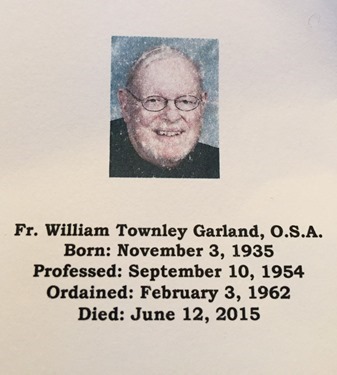
He had a long and distinguished career in Catholic education and served as the superintendent of schools for the Diocese of Fall River when I was bishop there.
Father Garland was an Augustinian, and the funeral was celebrated St. Augustine Church in Andover. Father Peter Gori and the Augustinian provincial, Father Michael Di Gregorio, were with us.
– – –
In the afternoon, I attended the groundbreaking for a new building of the St. Mary’s Center for Women and Children, which will provide housing for 12 formerly homeless families. The new building will be very close to the St. Mary’s Center, which will provide them with support and services that will assist them during their time of transition.





– – –
Following, that I returned to the Pastoral Center where I visited with Mr. John Nash and Dr. James Mandell, a board member from the Franciscan Hospital for Children, who spoke with me about a number of their initiatives.
– – –
Following that, I met with Bishop Joseph Zziwa of Kiyinda–Mityana, Uganda; Father Francis and Father Michael Nolan (whose Ugandan name is “Father Bbaale,” incidentally).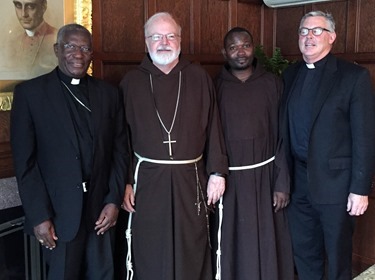
Bishop Zziwa was here to celebrate the feast of the Ugandan Martyrs at St. Mary’s in Waltham. We have a large Ugandan Catholic community in the archdiocese, and often, a bishop will come from Uganda to celebrate the feast day with them.
– – –
Wednesday, Father Michael Harrington and six priests from different countries serving in the archdiocese who had recently completed their enculturation program came for a visit.
– – –
Following that meeting I went to the wake for Jonathan Dos Santos, the young man who was tragically gunned down in Dorchester.
This young man had been a regular participant in activities at the Catholic Charities’ St. Peter’s Teen Center in Dorchester, and it would appear that the reason he was killed was that he resisted pressure to join a local gang.
His parents are immigrants from Cape Verde, and are active parishioners at St. Peter’s where the wake was held. There were hundreds and hundreds of people at the wake and the line was down the street.
I was happy to be there to try to console his parents and sister, and lead the prayers and Portuguese hymns to bring some consolation to that community, which has suffered so much.
While I was there I met other people who told me that their children had also died in this type of gun violence. The presence of so many firearms and the violence that claims so many innocent lives in that community is just heartbreaking.
We are very happy that Catholic Charities of the Archdiocese of Boston has been very much involved in addressing some of these problems, particularly with the Teen Center, which has been a godsend for so many neighborhood teenagers — keeping them in school, out of gangs and preparing them for college.
– – –
And, of course this week the Holy Father issued his long-awaited encyclical on the environment and protecting creation, Laudato Si’. It is gratifying to see the kind of attention that this very important statement has commanded in the media.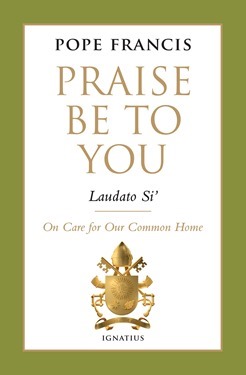
I gave an interview to the Spanish-language network Univision. I find it interesting that all the research indicates that the Hispanic community has been very concerned with the issue of the environment, and I’m very happy Univision wanted to cover the pope’s words on this matter. 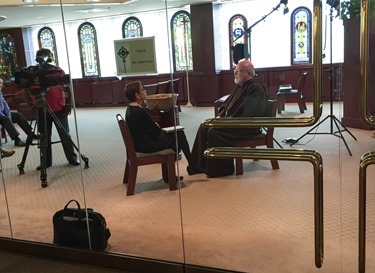
Perhaps some wonder why there is such interest in this among Hispanics. I think, firstly, as the Holy Father often says, there is a connection between the poor and the fragility of the ecology, and many of these people have seen the suffering they can come about because of devastation of the environment. Also the Hispanic population is a very young population, and I believe young people in general are more focused on issues of the environment. I think, in part, that is because they see they are inheriting this world that, as the Holy Father says, is crying out for protection.
Earlier this week, I issued a statement urging everyone to read this new encyclical, and I would like to share it with you here:
I welcome with joy and gratitude the encyclical letter, “Laudato Si’” (“Praise be to You”) on the urgent human, moral and religious issue of the environment. The first pope to take the name of Francis opens the letter with a phrase from St. Francis of Assisi whose spirit and vision is evident throughout the encyclical.
The Holy Father has given us a powerful, careful, prayerful analysis of two great ideas. The first idea, “Our Common Home,” the phrase he uses to describe the environment; the “home” for the human family is in severe danger and needs immediate protection and healing at the global, national and local levels of life. The second idea is that while the threatened state of the environment is a universal challenge affecting us all, those most in danger in the present and future are those already poor and vulnerable, within states and across the globe.
This constant linkage throughout the encyclical of the dual need to respect and protect “Our Common Home” and the need to respect and protect the dignity and lives of the poor may be regarded as the distinctive characteristic of this powerful message of Pope Francis. Both of these themes have been evident since the beginning of Pope Francis’s pontificate but this letter joins them with new depth and specificity.
“Laudato Si’” is permeated by a sense of human, moral and religious urgency, but the Pope recognizes the factual complexity of the joining of the environment and poverty. He states his case this way: “We are not faced with two separate crises, one environmental and the other social but rather with one complex crisis which is both social and environmental” (#139). In preparing the encyclical the Holy Father has consulted broadly in the scientific community, convinced, as he says, that the challenge facing “Our Common Home” provides a moment when religion and science can be joined in a crucial partnership.
The encyclical letter provides an overview of the specific issues which are well known in secular discussions of the environment: climate changes, shortages of safe clean water, the economic impact of choices made to address environmental threats and the need for wise and courageous political choices nationally and globally.
The letter is the voice of a pastor and teacher who leads a universal church across regions, cultures and nations. Pope Francis draws deeply on the Hebrew and Christian Scriptures and the Catholic social tradition as he develops the religious and moral foundation of his message. He relies heavily on the teaching of his immediate predecessors in the papacy; beginning with John XXII though Paul VI and particularly St. John Paul II and Benedict XVI. Chapter Two of the encyclical “The Gospel of Creation” draws deeply and broadly from biblical and theological scholarship to stress the specific meaning the environmental challenge is for Catholics. But the letter in the Pope’s mind has a broader audience. He states his intention at the outset to enter into the diverse global dialogue already underway about the threats to “Our Common Home.” He offers this letter as a contribution to the global conversation. He acknowledges with gratitude the resources other religious communities and traditions have made to the conversation, and he explicitly states that while many participants addressing the environment do not hold a religious perspective, he invites consideration of what religious vision and tradition can offer.
When Pope Francis turns to the moral dimensions of the environment and poverty, his themes are solidly grounded in the Catholic tradition of social teaching. Familiar Catholic themes of social justice, the option for the poor and the demands of the common good permeate the letter. The Holy Father adds a distinctive note to these in his call for an “integral ecology” seeking to bring the traditional ideas to confront the authentically new challenges posed by the environment and poverty.
“Laudato Si’” is a teaching document to be sure; but it is also a call for action at every level of our common life. In the final two chapters of the letter, Pope Francis highlights some of the choices which face individuals, states and international institutions if the twin problems of protecting the environment and honoring the equal dignity of all are to be faced effectively.
This encyclical, appearing still early in a new century, is designed to have a long shelf-life. The problems it analyzes are both urgent and complex; the responses to these must begin now, but will take time to come to fruition. I commend the letter to audiences inside and beyond the Catholic community and I pray for its reception and effective implementation.
Until next week,
Cardinal Seán
